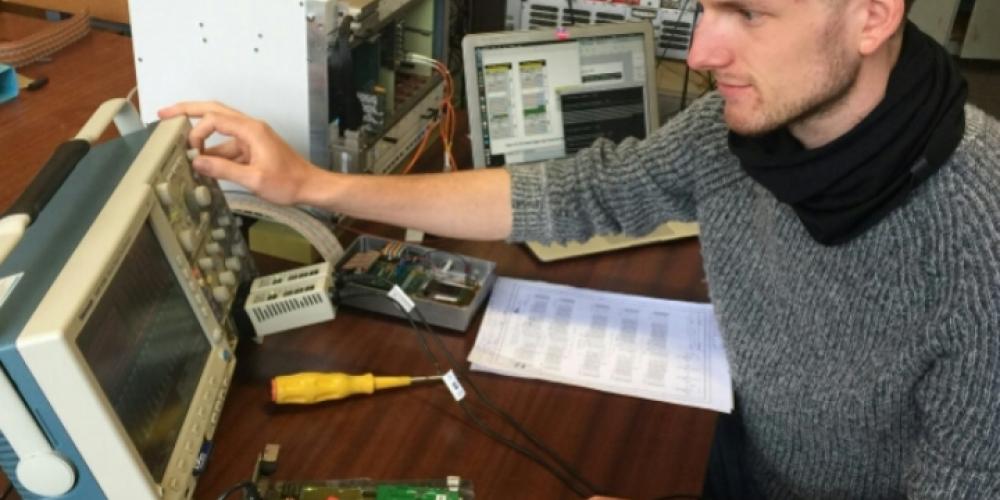
Since the inception of the CMS experiment 15 years ago, VUB researchers work at the LHC accelerator at CERN to study the fundamentals of matter and its interactions at distances of a billionth of a billionth of a meter, the smallest scales achievable in the laboratory. This culminated, in 2012, in the discovery of the Higgs boson, leading to the Nobel prize in physics in 2013 for the Belgian François Englert and Peter Higgs for the theoretical prediction of this particle already more than 50 years ago. While this Higgs boson and many other topics continue to be studied with the many more LHC collisions recorded since, it is already anticipated that the ultimate scientific reach of the LHC collider necessitates a much larger, up to tenfold, collision intensity. To achieve this, an upgrade phase will start from 2026 onwards, but already now the necessary preparations are being worked on.
At the VUB, we engage in the upgrade of the inner tracking device, a detector that allows to precisely reconstruct trajectories of particles as they emerge from the collisions. Jarne De Clercq joined the VUB team of Prof. Steven Lowette as a PhD student after his graduation from Ghent University in 2015. Starting from his Master thesis experience in detector instrumentation and electronics, he took up a new challenge in this very dynamic project of the CMS tracker detector upgrade, at a moment where several of the basic design choices still had to be researched and defined.
One of the big challenges for this new detector lies in the huge data flows that need to be processed in the readout electronics to ensure an efficient recording of the signals from the many hundreds of energetic particles that emerge out of the collisions, and this 40 million times per second. At this moment, dedicated state-of-the-art electronics is being developed and tested, and this is the area where Jarne's work stands out and has become crucial to the project.
In particular, Jarne co-designs and develops the so-called firmware that programs electronic chip functionalities to be able to receive and process at the individual bit level the vast amount of data coming from the detector during data taking. So far only prototypes of the electronic components exist, and Jarne has become a key member of the teams testing these prototype chips and other electronics hardware as very first versions come from the factories. Also in larger test campaigns, where first prototype detectors are tested with particle beams, he is one of the pillars in ensuring smooth data recording.
"I like a technical challenge," Jarne explains, "and this one is of a fabulous proportion. It feels special to develop the seeds of a system that in several years from now will process these enormous data streams coming from such a high-tech detector. And it needs to run like a Swiss watch - any flaw may directly impact the quality of the data and thus the physics analysis."
It's also a proud moment for Jarne's PhD advisor, Prof. Steven Lowette: "Jarne is not only technically outstanding, he is also fun to work with and an excellent teamplayer, seamlessly integrating and excelling in this international world-class detector and electronics development research he participates in. This prize is a remarkable recognition for a PhD student, and very well deserved."
More info:
http://www.iihe.ac.be/cms-2
Jarne De Clercq (jarne.de.clercq@vub.be)
Prof. Steven Lowette (steven.lowette@vub.be)
Jarne De Clercq's research is supported through the FWO Odysseus program.